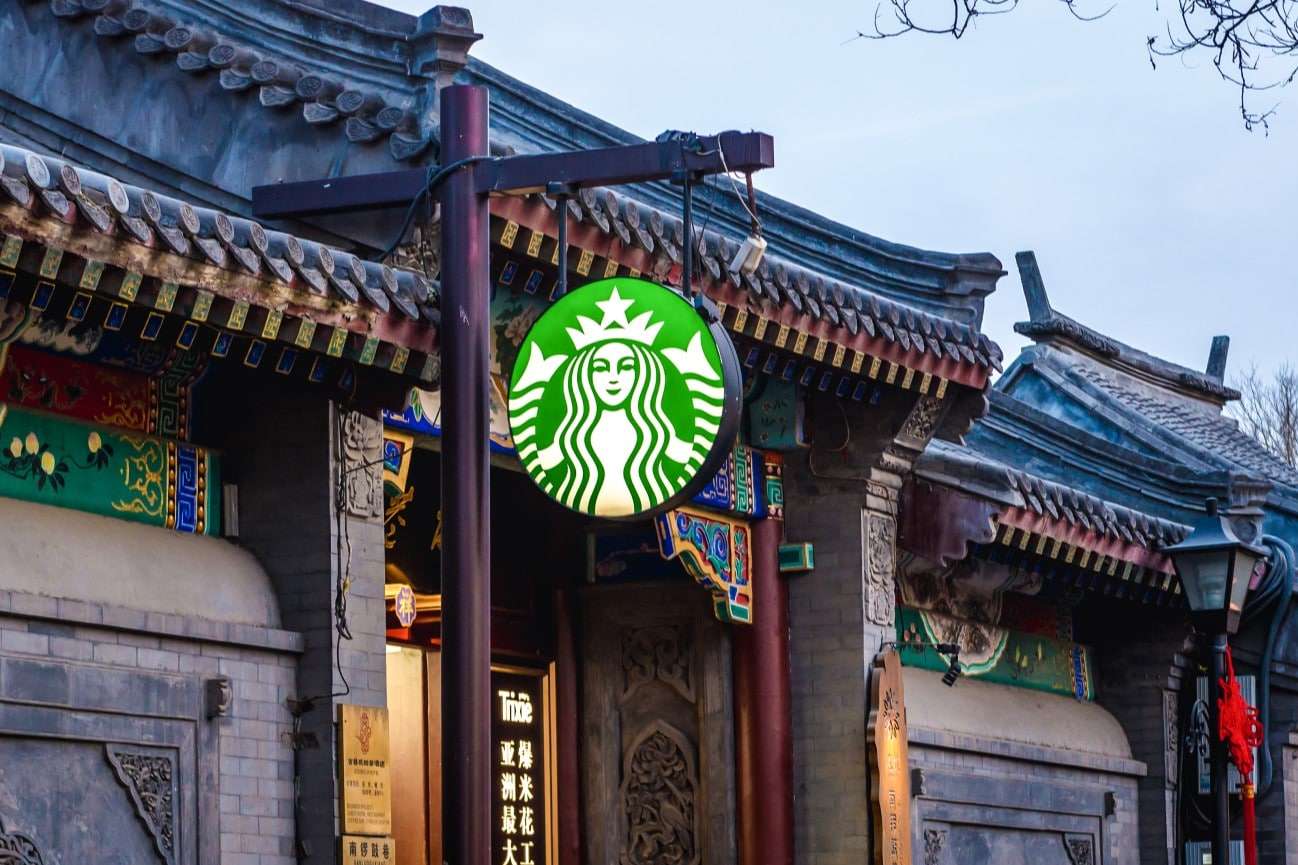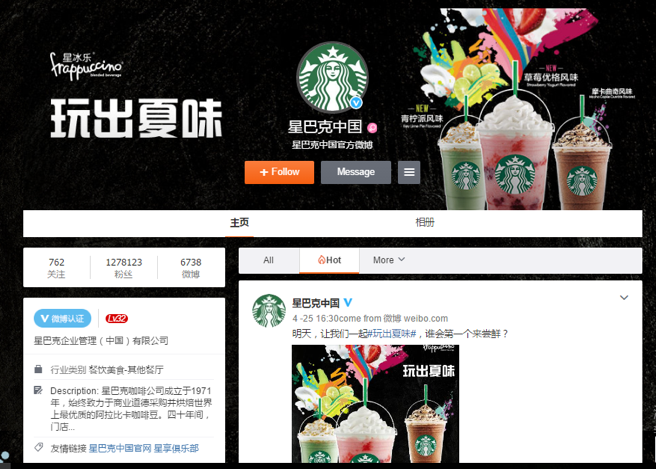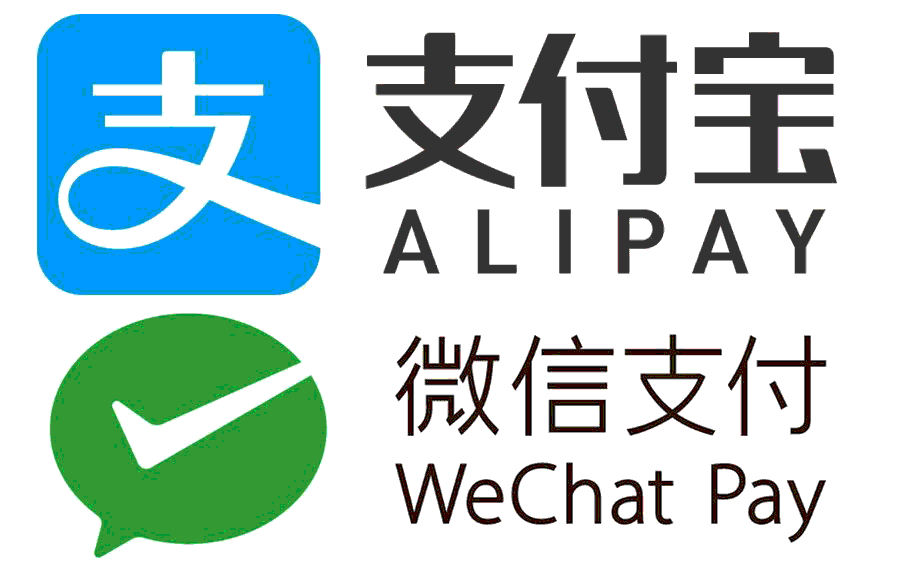How did Starbucks conquer the Chinese market? Entering China, a nation with a rich tea culture, seemed challenging for a coffee giant. However, Starbucks not only succeeded but thrived. How did they do it?
Starbucks, founded in 1971, is an American coffeehouse chain known for its high-quality coffee and customer experience. China, with its rapidly growing middle class, offered a huge opportunity. By 2019, China became Starbucks’ second-largest market, significantly boosting its global revenue.
This article explores the key strategies behind Starbucks’ success in China, providing insights into how they navigated this complex market to become a dominant player.
Initial Market Research

How Did Starbucks Analyze Coffee Consumption Trends in China?
Starbucks began by conducting thorough market research to understand the coffee consumption trends in China. Key findings included:
- Rapid urbanization and an increasing middle class.
- A growing interest in premium coffee products.
- A compound annual growth rate (CAGR) of 15% in the coffee market by 2019.
These insights highlighted a significant opportunity for Starbucks to position itself as a luxury brand in a burgeoning market.
Identifying Key Target Cities for Expansion
Starbucks strategically identified key target cities for expansion based on their economic potential and consumer behavior. They focused on:
| City | Population (millions) | GDP per Capita (USD) |
|---|---|---|
| Shanghai | 24.3 | 22,000 |
| Beijing | 21.5 | 23,000 |
| Guangzhou | 13.3 | 20,000 |
| Shenzhen | 12.5 | 27,000 |
These tier-one and prominent tier-two cities were chosen because they had higher disposable incomes and a larger concentration of potential customers open to new lifestyle trends. Starbucks opened its first stores in these cities to establish a strong presence.
Understanding Chinese Consumer Preferences
Starbucks also focused on understanding Chinese consumer preferences:
- Premium Experience: Chinese consumers valued a premium experience and a comfortable environment.
- Cultural Adaptation: Introduction of local flavors such as green tea lattes and mooncakes during the Mid-Autumn Festival.
- Socializing Space: Stores were designed as places for socializing and relaxation, aligning with the cultural preference for communal spaces.
Cultural Adaptation
How Did Starbucks Tailor Its Products to the Chinese Market?
Starbucks understood that to thrive in China, they needed to adapt their products to local tastes. This led to the creation of several products specifically designed for the Chinese market:
- Green Tea Frappuccino: This drink became immensely popular, catering to the local preference for tea-based beverages.
- Black Sesame Matcha Latte: A blend of traditional flavors with a modern twist, appealing to the Chinese palate.

Menu Adaptation to Include Local Flavors
To further integrate into the Chinese market, Starbucks adapted its menu to include local flavors:
- Mooncakes during the Mid-Autumn Festival:
- Flavors: Red bean, lotus seed paste, and egg yolk.
- Impact: Boosted sales and strengthened cultural connections.

- Dragon Dumplings for the Dragon Boat Festival:
- Offered in flavors like spicy Sichuan and sweet red bean.

These adaptations not only respected cultural traditions but also attracted customers looking for familiar tastes in a modern setting.
Store Decor and Ambiance Reflecting Chinese Culture
Starbucks also ensured that their store decor and ambiance reflected Chinese culture. Key elements included:
- Traditional Motifs:
- Incorporation of calligraphy art and bamboo furniture.
- Use of local artwork and decorations to create an authentic atmosphere.
- Ambiance:
- Stores designed as social spaces, aligning with Chinese preferences for communal gatherings.
- Comfortable seating and warm lighting to enhance the customer experience.

Marketing Strategy
How Did Starbucks Leverage Chinese Social Media?
Starbucks effectively utilized Chinese social media platforms to establish a strong online presence. They launched targeted campaigns on WeChat and Weibo, two of the most popular social media networks in China. These platforms were instrumental in engaging with a tech-savvy, urban consumer base.
Campaigns on WeChat and Weibo
Starbucks created compelling campaigns on WeChat and Weibo to connect with their audience:
- WeChat:
- Exclusive promotions and mobile ordering.
- Customer service and feedback integration.
- By 2020, Starbucks had over 1 million followers on WeChat, significantly boosting engagement and sales.
- Weibo:
- Hashtag campaigns like #StarbucksMooncake during the Mid-Autumn Festival.
- Collaborations with celebrities and influencers to increase brand visibility.
- Campaigns often went viral, generating millions of impressions and increasing brand awareness.

Collaborations with Local Influencers
Understanding the power of local influencers, Starbucks collaborated with Key Opinion Leaders (KOLs) and celebrities to promote their brand:
- KOL Partnerships:
- Collaborated with influential KOLs like Li Jiaqi, a famous beauty influencer, to promote seasonal drinks.
- These collaborations helped Starbucks reach millions of followers, enhancing brand trust and loyalty.

- Celebrity Endorsements:
- Engaged popular Chinese celebrities for product endorsements.
- Celebrity campaigns led to significant spikes in sales and social media engagement.
Loyalty Programs Tailored to Chinese Preferences
Starbucks designed loyalty programs specifically for the Chinese market to build customer loyalty and encourage repeat purchases:
- Starbucks Rewards in China:
- Customized Offers: Personalized promotions based on customer purchase history.
- Mobile Integration: Seamless integration with WeChat and Alipay for easy sign-up and reward redemption.
- Exclusive Benefits: Members received exclusive offers, early access to new products, and invitations to special events.
| Feature | Description |
|---|---|
| Customized Offers | Promotions based on purchase history |
| Mobile Integration | Integration with WeChat and Alipay |
| Exclusive Benefits | Early access to products, special event invitations |
Expansion and Network Development
How Did Starbucks Expand Rapidly in China?
Starbucks implemented a strategy of rapid opening of new stores to establish a strong presence in China. By 2020, Starbucks had opened over 4,700 stores across China, making it their fastest-growing market. This aggressive expansion was crucial to capture market share quickly and build brand visibility.
Initial Openings in Major Cities Followed by Second-Tier Cities
Starbucks began its expansion by targeting major cities with high disposable incomes and urban populations. Key cities included:
- Shanghai
- Beijing
- Guangzhou
- Shenzhen
After establishing a strong foothold in these primary markets, Starbucks expanded into second-tier cities such as:
- Chengdu
- Hangzhou
- Chongqing
- Nanjing
This two-phase approach allowed Starbucks to build brand presence in high-visibility locations before moving into emerging urban areas.

Local Partnerships for Expansion
To navigate the complexities of the Chinese market, Starbucks formed local partnerships to support their expansion efforts. These partnerships provided valuable insights and resources for successful market entry:
- Joint Ventures with Chinese Companies:
- Collaborations with local firms helped Starbucks understand regional market dynamics.
- Facilitated smoother operations and compliance with local regulations.
| Partnership Type | Benefits |
|---|---|
| Joint Ventures | Understanding local market dynamics, smoother operations |
| Local Suppliers | Ensuring consistent product quality and supply |
| Real Estate Partnerships | Securing prime store locations |
Training and Development of Local Staff
Starbucks prioritized the training and development of local staff to ensure consistent service quality and brand experience. Key initiatives included:
- Comprehensive Training Programs:
- Baristas and store managers underwent rigorous training to maintain Starbucks’ high standards.
- Emphasized customer service, product knowledge, and brand values.
- Leadership Development:
- Investment in developing local leadership to manage its growing network of stores.
- Local leaders were crucial in adapting Starbucks’ corporate culture to fit the Chinese market.
Supply Chain Management
How Did Starbucks Adapt Its Supply Chain for the Chinese Market?
Starbucks faced the challenge of adapting its supply chain to meet the unique needs of the Chinese market. This required a strategic overhaul to ensure efficiency and consistency in product quality across all locations. Starbucks implemented several key changes to optimize its supply chain for China.
Adapting the Supply Chain to Meet the Needs of the Chinese Market
To ensure their products met local preferences and maintained high quality, Starbucks made significant adjustments to its supply chain:
- Sourcing Locally: Starbucks began sourcing more ingredients locally to reduce costs and ensure freshness. This included local coffee beans and other essential ingredients.
- Customizing Logistics: They optimized their logistics to handle the large and diverse Chinese market, ensuring timely delivery and maintaining product quality.
Local Partnerships for Product Supply
Forming local partnerships was crucial for Starbucks to maintain a steady and reliable supply chain. These partnerships helped Starbucks integrate into the local economy and ensure a consistent product supply:
- Partnership with Local Milk Producers: To guarantee the freshness and quality of dairy products, Starbucks collaborated with local milk suppliers. This not only improved product quality but also reduced supply chain disruptions.
- Collaboration with Tea Producers: Understanding the cultural importance of tea, Starbucks partnered with local tea producers to introduce high-quality tea-based beverages tailored to Chinese tastes.
Example: Partnership with Local Milk and Tea Producers
An excellent example of Starbucks’ localized supply chain strategy is their collaboration with local milk and tea producers:
- Milk Suppliers: By partnering with reputable local dairy farms, Starbucks ensured a consistent supply of fresh milk. This move helped maintain the quality of their popular milk-based beverages like lattes and cappuccinos.
- Tea Producers: Starbucks worked with renowned tea farms to source premium tea leaves. This enabled them to create unique products like the Green Tea Frappuccino, which quickly became a customer favorite.
Digital Strategy and Innovation
How Did Starbucks Revolutionize the Digital Experience in China?
Starbucks leveraged its digital strategy to enhance the customer experience and streamline operations in China. The development of the Starbucks mobile app, integration with popular mobile payment platforms, and innovative customer service solutions have been key to their success.
Development of the Starbucks Mobile App in China
Starbucks launched a customized mobile app for the Chinese market to cater to tech-savvy consumers. The app’s features include:
- Order and Pay: Customers can order and pay for their beverages online, enhancing convenience.
- Rewards Program: The app integrates the Starbucks Rewards program, allowing customers to accumulate points and receive personalized offers.
- Personalized Offers: The app provides offers based on customers’ purchase history.
By 2020, the Starbucks app had millions of downloads, reflecting its popularity among Chinese consumers.
Integration with Mobile Payment Platforms
 To ensure convenience, Starbucks integrated its app with China’s leading mobile payment platforms:
To ensure convenience, Starbucks integrated its app with China’s leading mobile payment platforms:
- Alipay: Partnering with Alipay, which has over 700 million users, allowed Starbucks to offer quick and secure transactions.
- WeChat Pay: Integration with WeChat Pay, used by over a billion people, streamlined the payment process further.
These integrations enabled cashless transactions, reducing wait times and enhancing the overall customer experience.
Innovations in Customer Experience
Starbucks introduced several innovations in customer experience to stay competitive in the Chinese market:
- Mobile Ordering and In-Store Pickup: This feature allows customers to place orders via the mobile app and pick them up at a nearby store, minimizing wait times. It is particularly popular in urban areas.
- Personalized Recommendations: The app uses data analytics to offer personalized drink and food recommendations, enhancing customer satisfaction and driving sales.
| Feature | Benefits |
|---|---|
| Order and Pay | Convenience, reduced wait times |
| Rewards Program | Customer loyalty, personalized offers |
| Integration with Alipay | Quick, secure transactions |
| Integration with WeChat Pay | Streamlined payment process |
| Mobile Ordering and Pickup | Minimizes wait times, enhances convenience |
| Personalized Recommendations | Increases customer satisfaction and sales |
Financial Results and Impact
How Has Starbucks’ Financial Performance in China Shaped Its Global Success?
Starbucks’ strategic initiatives in China have led to significant financial gains and strengthened its global brand presence. Analyzing Starbucks’ financial performance in China highlights the broader impact on the company’s overall success.
Analysis of Starbucks’ Financial Performance in China
Starbucks’ entry into China has been marked by impressive financial growth. Key performance indicators include:
- Revenue Growth:
- By 2019, Starbucks’ revenue in China grew by 18% year-over-year.
- The growth was driven by an expanding store base and increasing same-store sales.
- Store Expansion:
- Over 4,700 stores opened by 2020, making China Starbucks’ second-largest market.
- Aggressive expansion plans with a target of opening 600 new stores annually over the next five years.
- Same-Store Sales:
- Consistent same-store sales growth with a 5% increase in 2019.
- Growth driven by high customer loyalty and effective localized marketing campaigns.
Impact on the Overall Starbucks Brand
The success in China has significantly impacted the overall Starbucks brand:
- Brand Equity:
- Established as a premium brand in China, enhancing global brand equity.
- Recognized for high-quality products and a premium customer experience.
- Market Position:
- Positioned as a leader in the global coffee market.
- Demonstrated ability to adapt and succeed in diverse international markets.
- Customer Loyalty:
- High customer loyalty in China has contributed to the brand’s reputation for quality and consistency worldwide.
- Successful implementation of the Starbucks Rewards program, with millions of members.
Contribution to the Company’s Global Revenue
China’s contribution to Starbucks’ global revenue has been substantial:
| Metric | Contribution |
|---|---|
| Revenue Share | China accounted for approximately 10% of Starbucks’ total revenue by 2020. |
| Profit Margins | Higher profit margins in China due to premium pricing and efficient supply chain management. |
| Future Growth | Expected to drive significant future revenue growth with plans to open 600 new stores annually over the next five years. |
Lessons Learned and Future Prospects
What Key Lessons Did Starbucks Learn from Expanding into China?
Starbucks’ successful expansion into China has provided valuable insights and key lessons that can guide future growth strategies and offer implications for other companies.
Key Lessons from the Expansion into China
- Cultural Adaptation is Crucial:
- Understanding and integrating into the local culture is essential.
- Starbucks introduced local flavors and adapted its store ambiance to reflect Chinese preferences, significantly boosting acceptance and loyalty.
- Digital Integration:
- Leveraging digital platforms like WeChat and Alipay for payments and launching a localized mobile app improved customer convenience and engagement.
- By 2020, the Starbucks app had millions of downloads in China.
- Strategic Partnerships:
- Forming local partnerships was key to navigating the market efficiently.
- Collaborations with local suppliers and businesses helped ensure consistent product quality and smoother operations.
Future Strategies to Sustain Growth in China
To maintain and accelerate its growth in China, Starbucks plans to focus on several strategic areas:
- Continued Expansion:
- Starbucks aims to open 600 new stores annually over the next five years.
- Targeting both major cities and emerging urban areas to capture a broader customer base.
- Innovation in Product Offerings:
- Introducing more localized products and seasonal offerings to cater to evolving consumer tastes.
- Example: Seasonal drinks tailored to local festivals and traditions.
- Sustainability Initiatives:
- Increasing focus on sustainability by promoting eco-friendly practices and products.
- Aligning with global and local environmental goals to appeal to environmentally conscious consumers.
Implications for Other Companies Entering the Chinese Market
Starbucks’ journey provides important lessons for other companies looking to enter the Chinese market:
- Understand Local Preferences:
- Tailor products and services to meet the unique needs and preferences of Chinese consumers.
- Conduct thorough market research to identify local tastes and cultural nuances.
- Leverage Technology:
- Utilize local digital platforms and mobile payment systems to enhance customer convenience and engagement.
- Develop a strong digital strategy that includes a localized app and integration with popular local services.
- Build Local Partnerships:
- Collaborate with local businesses and suppliers to ensure smooth operations and build credibility.
- Partnerships can help navigate regulatory challenges and provide valuable market insights.
- Focus on Quality and Consistency:
- Maintain high standards in product quality and customer service to build a loyal customer base.
- Ensure consistent brand experience across all locations to strengthen brand trust and loyalty.
Final Insights and Strategic Takeaways
What Are the Key Takeaways from Starbucks’ Success in China?
In examining Starbucks’ expansion into China, several key points emerge that highlight the company’s strategic approach and adaptability.
Summary of Key Points Discussed in the Article
- Initial Market Research: Starbucks conducted thorough research to understand coffee consumption trends and consumer preferences in China, identifying key cities for expansion.
- Cultural Adaptation: The company successfully tailored its products and store ambiance to reflect Chinese culture, introducing local flavors and seasonal products.
- Marketing Strategy: Starbucks leveraged Chinese social media platforms like WeChat and Weibo, and collaborated with local influencers to enhance brand visibility and engagement.
- Expansion and Network Development: Rapid store openings in major and second-tier cities, supported by local partnerships, facilitated Starbucks’ growth.
- Supply Chain Management: Adapting the supply chain to local needs and forming partnerships with local suppliers ensured product quality and consistency.
- Digital Strategy and Innovation: The development of a localized mobile app and integration with mobile payment platforms like Alipay and WeChat Pay enhanced customer convenience.
- Financial Performance and Impact: Starbucks’ financial success in China has significantly contributed to its global revenue and strengthened its brand.
Final Reflections on Starbucks’ Success in China
Starbucks’ journey in China underscores the importance of cultural adaptation and innovation. By understanding and integrating into the local culture, leveraging digital platforms, and forming strategic partnerships, Starbucks has managed to build a loyal customer base and become a dominant player in the Chinese market.
Closing Message on the Importance of Cultural Adaptation and Innovation for Success in Foreign Markets
The success of Starbucks in China serves as a powerful reminder that cultural adaptation and continuous innovation are crucial for any company seeking to expand into foreign markets. Tailoring products and experiences to meet local needs, leveraging technology to enhance customer engagement, and forming strategic partnerships are key strategies that can drive success in diverse markets worldwide.
Boost Your Business Success with Qianhai MCC
As we have seen, Starbucks’ successful expansion into the Chinese market was a result of thorough market research, strategic planning, and cultural adaptation. If you are inspired by Starbucks’ journey and looking to enhance your own business operations in China or globally, Qianhai MCC offers the ideal solutions for your logistics and supply chain needs.
Why Choose Qianhai MCC?
1. Strategic Location: Situated in the heart of the Greater Bay Area, our facilities provide seamless connectivity to Hong Kong, the Pearl River Delta, and beyond. This prime location ensures rapid transit and direct access to the vast Chinese market, much like Starbucks’ strategic placement of stores in key cities.
2. Comprehensive Services: From International Consolidation and Transshipment to Global Distribution, Qianhai MCC offers a full suite of logistics services. Just as Starbucks adapted their offerings to fit local tastes, we tailor our services to meet your specific needs, simplifying the logistics process by centralizing operations under one roof.
3. Cost Efficiency: Benefit from lower operational and maritime practice costs. Our ASEAN origin LCL shipments qualify for tax exemptions, offering substantial savings on import costs. Starbucks thrived by understanding and adapting to economic factors, and you can too by leveraging our cost-efficient services.
4. Streamlined Customs Procedures: Our Import Console Boxes do not require port declarations, reducing administrative burdens and expediting customs clearance. This efficiency is akin to Starbucks’ use of digital platforms to streamline operations and enhance customer experience.
5. Enhanced Supply Chain Management: With full coverage of the Pearl River Delta, our services ensure timely and efficient delivery of goods, improving your supply chain reliability. Starbucks’ success was built on understanding and managing supply chain intricacies, and we provide the tools to achieve similar efficiency.
6. Value-Added Services: Optimize your logistics with our value-added services such as labeling, pick-pack, and kitting, helping you avoid higher labor costs in destination countries. Just as Starbucks offered products tailored to local tastes, we provide services tailored to your logistical needs.
Who Can Benefit?
- Manufacturing Companies: Ensure a smooth supply chain with efficient logistics for transporting raw materials and finished goods.
- Import-Export Trading Companies: Manage sourcing, shipments, and customs clearance seamlessly.
- Multinational Corporations (MNCs): Navigate global trade regulations and optimize logistics costs effectively.
- E-Commerce Companies: Improve customer satisfaction with faster delivery and efficient inventory management.
- Freight Forwarders: Experience cost savings and improved efficiency with our direct consolidation services.
Join Us Today
Take your logistics to the next level with Qianhai MCC. Our innovative solutions and strategic location provide a competitive edge in the global market. Learn from Starbucks’ successful strategies and apply them to your business with the help of Qianhai MCC.
FAQ: How Starbucks Successfully Entered the Chinese Market
What strategies did Starbucks use to enter the Chinese market?
Starbucks used several strategies to enter the Chinese market successfully, including thorough market research, cultural adaptation, digital integration, local partnerships, and rapid expansion. They understood local coffee consumption trends, tailored products to reflect Chinese culture, developed a localized mobile app, collaborated with local suppliers, and opened stores quickly in major and second-tier cities.
How did Starbucks adapt its products for the Chinese market?
Starbucks adapted its products by introducing local flavors like Green Tea Frappuccino and offering seasonal products such as mooncakes. They customized their menu to include tea-based beverages and flavors that appeal to Chinese tastes.
What role did digital strategy play in Starbucks' success in China?
Digital strategy was crucial for Starbucks' success in China. They launched a localized mobile app with features like mobile ordering and rewards, integrated with Alipay and WeChat Pay for seamless cashless transactions, and used data analytics to offer personalized recommendations and promotions.
How did Starbucks leverage social media in China?
Starbucks effectively used Chinese social media by running targeted campaigns on WeChat and Weibo. They collaborated with local influencers and celebrities to enhance brand visibility and engaged customers through interactive content and promotional offers.
What were the key challenges Starbucks faced in China?
Key challenges included navigating cultural differences in a market with a strong tea culture, facing competition from local and international coffee brands, and complying with local business regulations and standards.
How did local partnerships benefit Starbucks in China?
Local partnerships helped Starbucks by ensuring a steady supply of high-quality local ingredients, facilitating market entry and operations through collaborations with local businesses, and enhancing brand credibility and acceptance among Chinese consumers.
What impact did Starbucks' expansion in China have on its global business?
Starbucks' expansion in China significantly impacted its global business by contributing approximately 10% to the company’s total revenue by 2020. It enhanced its global brand equity and market position and demonstrated its ability to adapt and succeed in diverse international markets.













